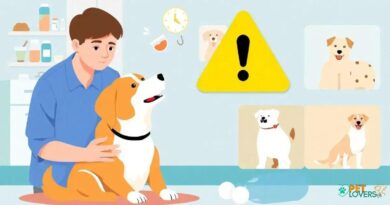O que é Queda de Dentes
What is Tooth Loss in Dogs?
Tooth loss, or dental loss, in dogs refers to the condition where a dog loses one or more of its teeth. This can occur due to various reasons, including dental disease, trauma, or age-related factors. Understanding the causes and implications of tooth loss is essential for dog owners to ensure their pets maintain good oral health and overall well-being.
Causes of Tooth Loss in Dogs
There are several primary causes of tooth loss in dogs. One of the most common reasons is periodontal disease, which affects the gums and supporting structures of the teeth. Other causes include tooth fractures from chewing hard objects, dental caries, and systemic diseases that may affect the teeth. Additionally, older dogs are more prone to losing teeth due to age-related degeneration.
Signs of Tooth Loss in Dogs
Dog owners should be vigilant for signs that may indicate tooth loss. Common symptoms include difficulty eating, excessive drooling, bad breath, and visible gaps in the mouth where teeth have fallen out. If a dog exhibits any of these signs, it is crucial to consult a veterinarian for a thorough dental examination.
The Importance of Dental Care
Maintaining proper dental care is vital for preventing tooth loss in dogs. Regular dental check-ups, professional cleanings, and at-home dental hygiene practices, such as brushing your dog’s teeth, can significantly reduce the risk of periodontal disease and other dental issues. A proactive approach to dental health can help extend the life of your dog’s teeth.
Impact of Tooth Loss on a Dog’s Health
Tooth loss can have significant implications for a dog’s overall health. Missing teeth can lead to difficulties in eating, which may result in nutritional deficiencies. Additionally, the presence of periodontal disease can contribute to systemic health issues, including heart disease and infections. Therefore, addressing tooth loss promptly is crucial for maintaining a dog’s health.
Preventing Tooth Loss in Dogs
Preventive measures can help reduce the likelihood of tooth loss in dogs. Providing appropriate chew toys, avoiding hard objects that can fracture teeth, and ensuring a balanced diet rich in essential nutrients are all effective strategies. Moreover, regular veterinary dental check-ups can help identify potential problems before they lead to tooth loss.
Treatment Options for Tooth Loss
If a dog experiences tooth loss, various treatment options are available depending on the underlying cause. In some cases, extraction of damaged teeth may be necessary. For dogs with periodontal disease, professional cleaning and treatment may help restore oral health. Additionally, dental implants or prosthetics can be considered for some dogs to improve their quality of life.
When to See a Veterinarian
Dog owners should seek veterinary care if they notice any signs of tooth loss or dental problems. Early intervention is key to preventing further complications. Regular dental check-ups are also recommended, even if no immediate issues are apparent, as many dental problems can develop silently.
Conclusion: The Importance of Awareness
Being aware of the signs and causes of tooth loss in dogs is essential for every pet owner. By prioritizing dental health and seeking timely veterinary care, dog owners can help ensure their furry companions lead healthy, happy lives with strong, functional teeth.




